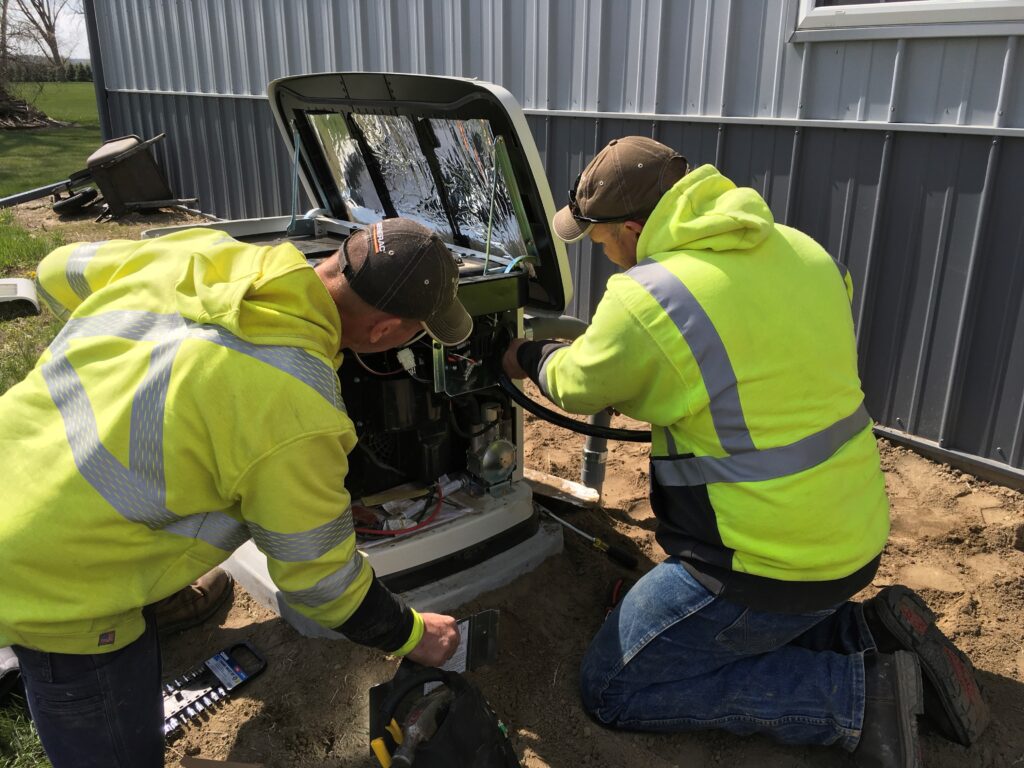
Since the shock of Winter Storm Uri in 2021, Texas residents have been increasingly investing in things like home generators, battery storage systems and rooftop solar to gain more control over their power supply amid the state’s continuing reliability challenges. Rayburn Electric Cooperative officials say this development is having a big impact on the way its member co-ops run their load management programs.
“In coordination with our distribution members, we’ve identified a large amount of home standby generators on our member systems by working directly with vendors and manufacturers,” said Christian Nagel, director of power supply at the generation and transmission co-op. “They’ve helped us identify members who’ve installed home energy equipment, and that’s helped us focus more attention on developing DER incentives.”
In late 2022, Rayburn— based in Rockwall with four distribution co-op members in northeastern Texas—worked with its members to design DER programs that offer financial incentives to encourage member engagement in helping manage the grid. That approach could be particularly beneficial during periods of high demand, when wholesale pricing for electricity spikes.

“We want to be able to leverage member home energy assets for both ancillary generation and load reduction,” said Nagel. “That will not only reduce demand for wholesale power, it will also help us control transmission costs, particularly during system peaks so we can pass on those savings to our member co-ops.”
Recent extreme weather events have increased the frequency of calls for voluntary conservation and emergency alerts for Electric Reliability Council of Texas members, including some that faced onerous wholesale power costs to meet high demand during heatwaves and extended cold snaps. Plant failures, limited transmission and fuel supply issues have been cited as contributing factors.
“Our member co-ops are working with us as they each develop their own specific retail rate designs that accommodate various resources like solar and energy storage,” said Nagel, noting that Rayburn recently added a DER specialist to its staff.
Those efforts require more complex solutions than determining where those resources are located and using them. Among the rate incentives currently being offered by the member co-ops are billing credits for participation and help in installing home generators, batteries and other devices, said Nagel.
“Rayburn and our members are also finalizing other incentives such as time-of-use rates as we look to add electric vehicles to the DER program,” he said.
Other developments, like increased telework, a proliferation of server farms and the growth of the electric vehicle market, are also impacting how and when electricity is used and increasing overall residential demand in Rayburn’s territory.
“Load is growing faster than dispatchable generation can be installed in the current ERCOT environment,” said Marc Cantrell, Rayburn’s director of power plant operations.
That prompted Rayburn to acquire a 758-megawatt natural gas-fueled plant in Grayson County previously owned by a private investor firm. The facility, which has been among ERCOT’s listed resources since 2014, has been rebranded as Rayburn Energy Station.
Its turbines can be ramped up to 50% power production within 10 minutes and full capacity within 30 minutes, allowing it to balance output from renewable energy resources.
“The addition of this key resource to our portfolio of solar, hydro and market purchases strategically positions Rayburn to ensure our member cooperatives are served with a broad energy resource mix,” said David A. Naylor, CEO of the G&T.
Rayburn officials support some changes made by ERCOT after winter storms Uri and Elliott, including real-time analytics and improved seasonal outlook forecasting. But the co-op continues to call for more improvements in demand response programs and preservation of sporadically used generation.
“Co-ops can invest in demand response programs, but during prolonged major weather events, there is little distribution co-ops can do to avoid calls for mandatory load shedding because of our residential load profile,” said Naylor.
“When these winter systems hit north Texas, we see our load double or triple depending on weather severity. Our challenge is making sure that we have enough supply to meet those large variances in load. Demand response can help us do that, particularly until adequate generation is available.”
Derrill Holly is a staff writer for NRECA.